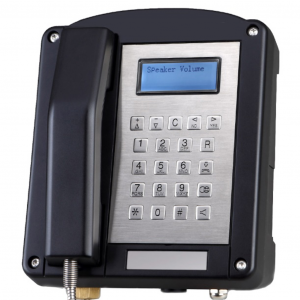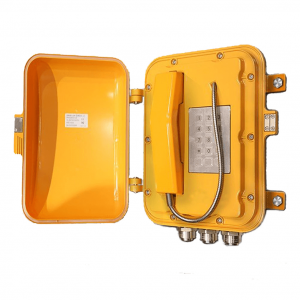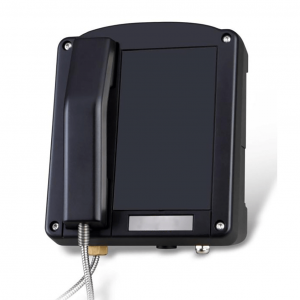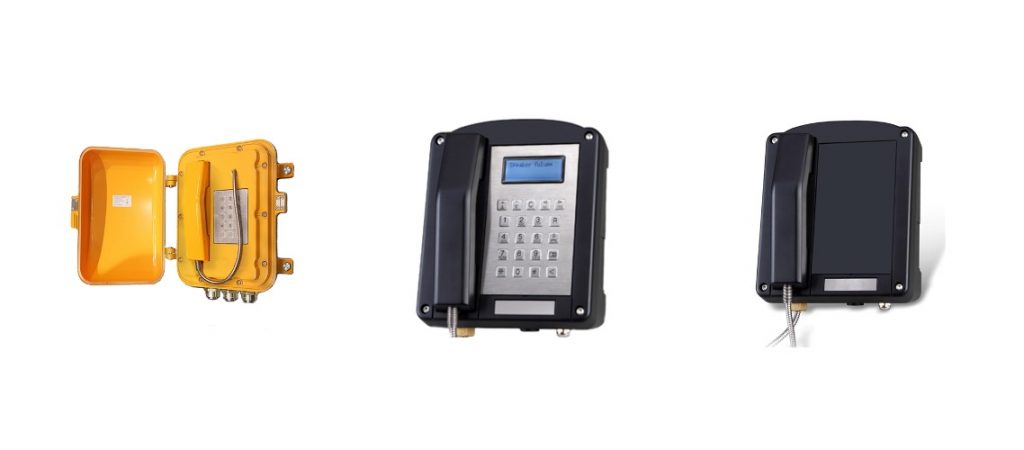When working in hazardous environments, such as in nuclear power plants, chemical, petroleum, and natural gas areas, safety measures used to safeguard industrial site workers and environments must be approached skillfully. The right measures and equipment make them have some form protection and safety from possible explosions caused by explosive gases or other dangerous items. Since people working in hazardous places need communication devices for regular work operation and emergencies and the common smartphones we use daily have no explosion-proof settings, it must have an explosion-proof phone on site to protect workers in hazardous areas.
This article explains the idea behind an explosion-proof phone and how it protects people in hazardous areas.

What is an explosion-proof phone?
An explosion-proof phone is basically a waterproof and explosion-proof VoIP telephone with rugged shell made from heavy metal which has strong appearance and can prevent damage. Explosion proof telephone used as communication equipment is to function perfectly in dangerous areas such as petrochemical mining, most times, stays intact through its lifespan.
An explosion-proof telephone may work in two ways: it can come in an explosion-proof case or, it can be an intrinsically safe phone. In this article, you will find out about the difference in these techniques.
How does an explosion-proof phone work?
As mentioned earlier, these phones contain the effect of explosions so that they can be a reliable communication device in hazardous areas. These are two ways explosion proof phones work:
- Explosion-proof case
In this case, the industrial phone comes in a metal containment that is manufactured to be able to withstand and keep out the effects of explosions. The explosion-proof case will maintain certain levels of integrity in hazardous areas and will be useful even in volatile environments. The insides of the phone will be made intrinsically safe in order to ensure coherent safety compliance.

- Intrinsically safe phones
We first introduce the concept of intrinsically safe equipment which is equipment and wiring that cannot release sufficient electrical or thermal energy to ignite a specific hazardous atmospheric mixture at the concentration most likely to ignite under normal or abnormal conditions.
Intrinsically safe phones are a kind of intrinsically safe equipment are made with specific battery criteria in accordance with safety directives, which makes them safe and reliable to use in hazardous environments. As regular smartphones do not have the safety rating – ATEX, UL, and IECEx which what explosion-proof phones process, it will cause explosion and combustion accidents in the dangerous area. The energy of the electric spark generated by the electromagnetic wave of regular smartphones is enough to reach the ignited concentration of some inflammable and explosive materials, which comes to the necessary of explosion-proof telephones.
To make up for this, industrial phones may use VoIP and SIP technology, which means that you can easily configure the phone in any PC with stable and free calls.
Advantages of industrial phones
- Using an industrial phone reduces the presence of triggers that may cause an explosion in volatile situations. This way, you create a safe circuit within hazardous areas.
- To provide a reliable form of communication that is needed for the productivity of daily industrial practices. They are also crucial during cases of an emergency.
- In cases of emergency, workers can communicate and call the necessary channels.

Explosion-proof phones are a necessity for safety and optimized communication in hazardous areas and especially in industrial settings. A lot goes into the manufacture of these phones to make them safe and ensure proper performance. Hence at Pearl electronics, an industrial telephone manufacture, is followed by standardized testing before being sold to consumers. This careful attention to detail follows the company’s philosophy of responsibility and is the reason we have become leading OEM/ODM of industrial Telephones, VoIP Products, Rugged Devices, and Data Collection Products.


